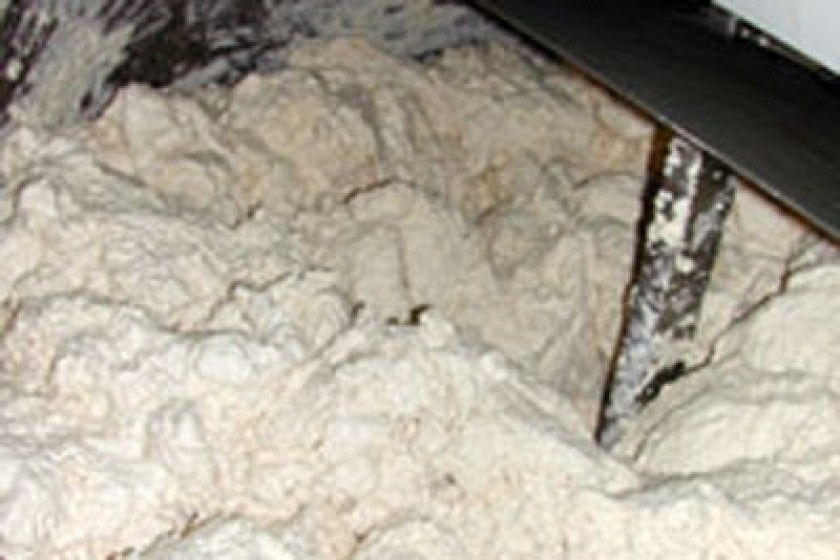
“Artificial” Bread
As recently as a few years ago, the techniques used for baking bread were laborious and it took 10-12 hours for the dough to ferment and be ready to bake.
Today, the use of catalysts and enzymes has decreased that time considerably – bread can be baked in 3-4 hours now. Catalysts, which bakers used to call bread vitamins, are complex herbal and chemical substances which allow the fermentation process to proceed more intensively. Bread becomes a more attractive product – it is larger and softer. This is an optical illusion in reality, because the inside of the bread is usually hollow.
The use of catalysts is not prohibited; they are added in European countries as well. But consumers there are informed of the types of available bread where catalysts are present, and those which have no additives. Besides this, the latter are always incomparably cheaper there. In our shops, one very rarely sees labels on the bread noting its type, ingredients, energyc value, price, weight, or information about the producer. When each shop receives a batch of unwrapped bread, it is accompanied by a piece of paper with the information mentioned above, but consumers are usually unaware of its existence and almost never demand to see it.
The use of catalysts is justified from a commercial point of view, because they save time and do away with additional production space that would otherwise be required. This allows for the enlargement of the variety of bread produced. But bread and nutritional technicians are against their use. “I am personally against the use of any additives. If bread is fermented properly, 17-18 different types of compounds are formed in it which give it its unique aroma and flavor. But since we are in this situation today, we should give the consumer the information he needs to decide what he wants to spend his money on,” said Aram Nazaryan , an associate professor in the department of Technological Processing of Plant Products at the Agrarian University and a leading expert in the production technology of bread and wheat products.
In 2006, catalysts produced in Turkeywere imported to Armenia, but they were later replaced by European ones. Catalysts are now imported to Armeniafrom France, Austriaand Germanyas well as produced in Yeghvard. “A year ago, a batch of Pakmaya catalysts was imported from Turkey. There was no information on the packaging about the ingredients or the manufacturer. During an exhibition in Moscow, I was surprised to find out that Pakmaya had ceased production inTurkey, because at that time it was still being sold inArmenia. I came back and made an announcement about this immediately. That batch disappeared from the market, but such an attitude towards food security is unacceptable,” said Aram Nazaryan.
What color is rye bread?
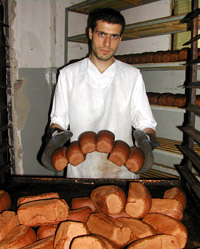 |
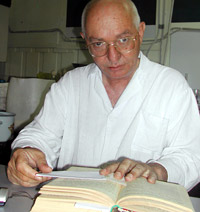 |
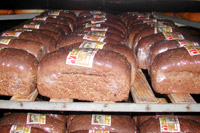 |
Doctors and nutritionists have long been advising the elderly as well as patients with diabetes and hypertension to give up white bread and consume only brown or rye bread. But not every dark-colored bread has been made with rye flour. “There are many cases where white flour is used and then dyed. They used to dye it with cinnamon, then they started using burnt sugar or cacao and finally began using food coloring. Of course it won't kill anyone, but consumers are being deceived. Also, the people consuming those types of bread are mainly people with health problems,” said Aram Nazaryan.
“Brown or rye bread is much more beneficial to one's health, but rye wheat is not easy to bake. Ryewheat does not have the strength to rise. So, if one sees fluffy bread resembling rye in a shop, it has probably been baked using white flour and catalysts and then dyed. White flour is less beneficial, but rises very well and looks good. White flour has lots of starch and less vitamins. The darker the color of the wheat, the less starch, which helps it to rise, but the more vitamins it contains,” said bio-technician and scientist Alexander Selimyan.
“About a month ago, we studied the Armenian market and discovered that rye wheat was not available We imported some and sold a small amount to only one organization, with whose products we were familiar. But, during that period when rye wheat was not available, bread supposedly made from it was abundant in all the shops,” said Arem Yeristyan, director of the Yeritsyan and Sons bread factory.
Starting this year, Yeritsyan and Sons have been producing Bio Bread , using technology developed by Alexander Selimyan. “We use a lactoacidic serum that I have developed in the production of this bread. There are no yeast or other additives in this bread. I believe only in ecologically pure bread, which has lipids and mineral substances, organic acids, vitamins and pigments. Bread has no competition in other food groups as far as its nutritional value is concerned. The label for Bio Breadbears my signature, and I responsible for the quality of this bread,” said Alexander Selimyan.
Bread remains unchecked
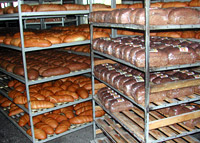 According to the law regarding inspections, food sites are checked once a year. However, the establishment of a body which is assigned with supervising security in food production, processing, reprocessing, packaging, labeling, transport, storage and consumption as well as services rendered in the sphere of nutrition is as yet incomplete. From now on, inspections will be conducted by the provincial centers of the food security and veterinary department of the Ministry of Agriculture. ”We have begun inspections in April at food sites, but we have not checked bread. We will probably being doing that next week,” said Grigor Danielyan, deputy head of theYerevanfood security and veterinary department. When asked how many bread factories there were inYerevan, Mr. Danielyan said that he did not know. Which begs the question – who are they going to inspect next week?
According to the law regarding inspections, food sites are checked once a year. However, the establishment of a body which is assigned with supervising security in food production, processing, reprocessing, packaging, labeling, transport, storage and consumption as well as services rendered in the sphere of nutrition is as yet incomplete. From now on, inspections will be conducted by the provincial centers of the food security and veterinary department of the Ministry of Agriculture. ”We have begun inspections in April at food sites, but we have not checked bread. We will probably being doing that next week,” said Grigor Danielyan, deputy head of theYerevanfood security and veterinary department. When asked how many bread factories there were inYerevan, Mr. Danielyan said that he did not know. Which begs the question – who are they going to inspect next week?
Photos by Nelli Shishmanyan
 Videos
Videos Photos
Photos




Write a comment